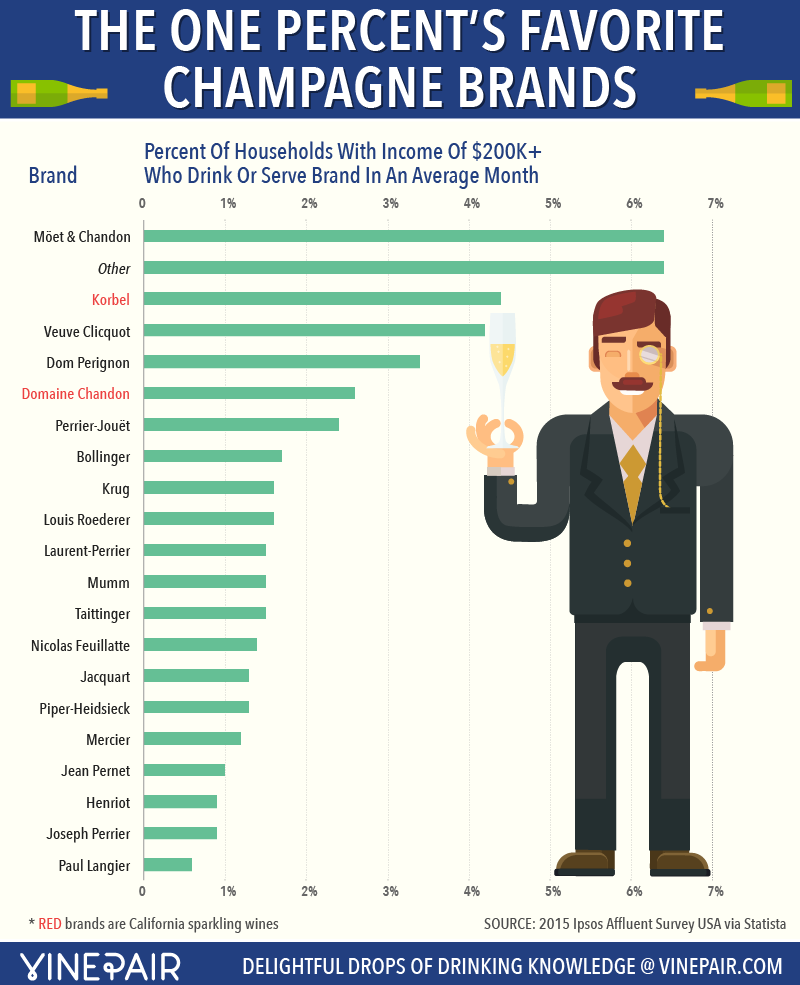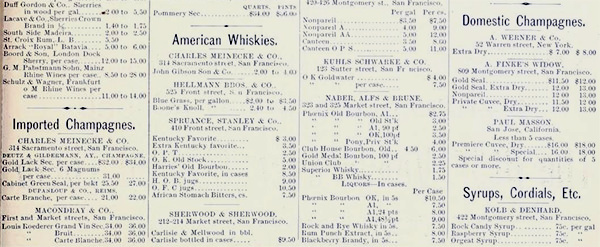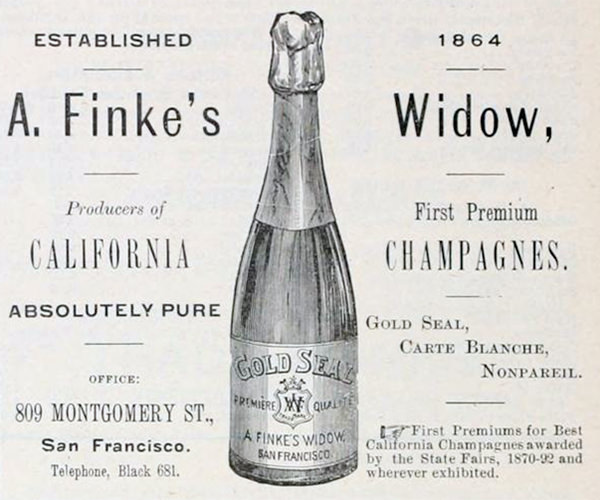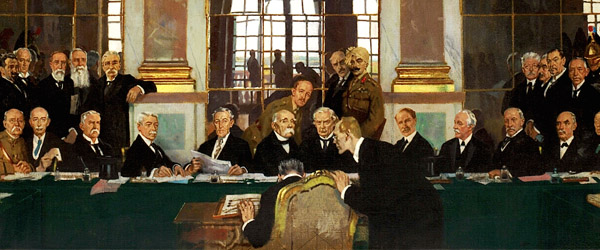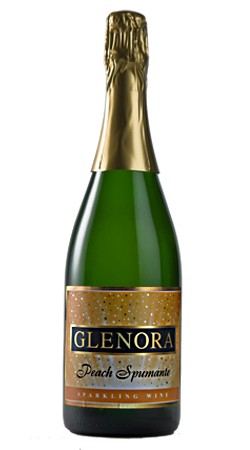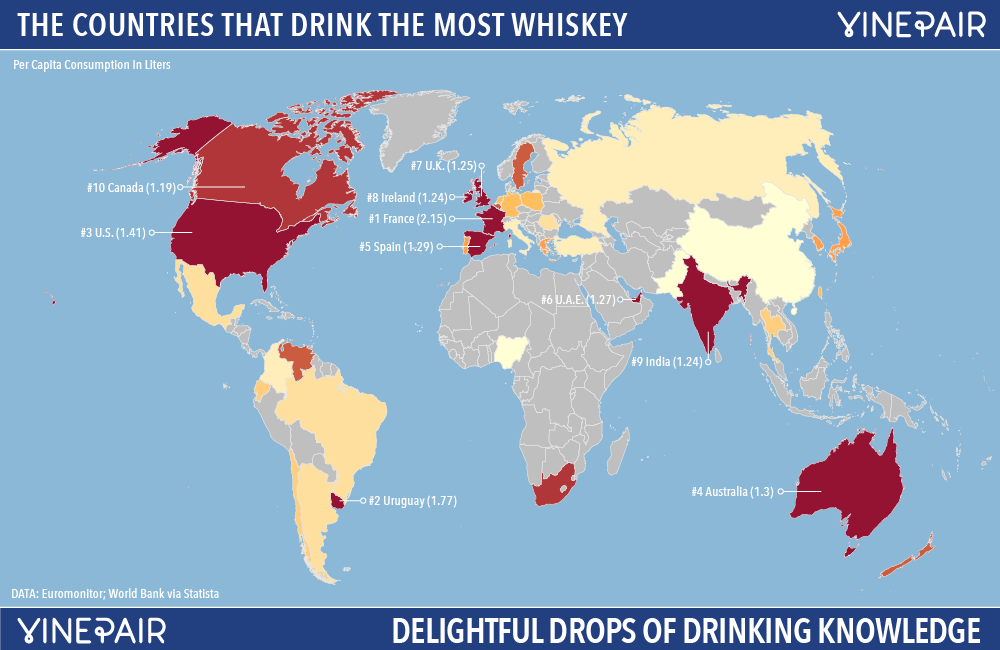Vadim Drobiz – Head of the Center for Federal and Regional Alcohol Market Research (CFRAMR)

The most quoted in the Russian media expert on the alcohol market of Russia, former Soviet republics and Eastern Europe. The latest news, detailed analysis, commentary, statistical databases on the alcohol market since 2002.
Full versions of the materials published in Russian on the website Vadim Drobiz http://cifrra.info/
Week on March 21 – March 27, 2016
Bacardi will pour William Lawson’s Scotch at the Russian plant
One of the world’s largest producers of alcohol Bacardi company agreed with alcoholic holding “Synergy” about the bottling of its William Lawson’s Scotch at plant “Tradition of Quality” in Moscow Region and in the future it will stop the import to Russia. In retail William Lawson’s Russian production could come this summer. “After that, William Lawson’s imports from Scotland will stop,” – said the head of Bacardi in Eastern Europe Alejandro Ouziel. According to the chairman of the “Synergy” Alexander Mechetin, for 2016 and 2017 for Bacardi it will produce about 1 million decaliters of William Lawson’s. The actual amount will depend on the supply and demand situation in the Russian economy, the parties stipulate. “Synergy” will be responsible only for bottling the product. This is the first production аn international brand of whiskey in the Russian company. (Since June 2015, the facilities of the Kazan alcoholic distillery bottled owned by Diageo brand Rowson’s Reserve whiskey, designed specifically for Russia. Before it, vodka “Smirnov” and rum Shark Tooth bottled by Petersburg “Ladoga”.)
The project was made possible thanks to the new Russian GOST (a set of technical standards maintained by the Euro-Asian Council for Standardization), which came into force on 1 July 2015, allowing to produce any grain distillates, ranging from whiskey and ending with the traditional Russian moonshine.
Financial terms of the agreement, the parties did not disclose.
Alejandro Ouziel of Bacardi says that the transfer of production William Lawson`s in Russia will allow the company less dependent on price fluctuations of the ruble. “We have not increased in proportion the value of our whiskey to drop of the ruble,” – emphasizes Ouziel. “Since the beginning of the active devaluation of the ruble price of our product on the shelf has increased by 25-30%, while the ruble has fallen significantly stronger”, – he added. Now stores offer to buy 0.5 liters of William Lawson’s an average of 800-850 rubles ($ 11.8 – $ 12.5), but you can find a 0.5 liter and for 450 rubles ($ 6.6).
For bottling will be used bottles of 0.5, 0.7 and 1 liter. Raw materials (60-degree alcohol) will be imported.
“Will Bacardi bottling other brands in Russia, the company has not yet decided”, – says Ouziel. Now William Lawson’s bottled in Scotland, Ecuador and India.
According to my calculations in the 0.5 liter bottle cost of whiskey – around 150 rubles ($ 2.20). Bottle, label, cap will cost 17 rubles ($ 0.25), bottling procedure – 10 rubles ($ 0.15). Total – $ 2.60 in 0.5 liter bottle.
For consumers, it is important where the product is made, so the bottling of whiskey in Russia is ambiguous, said Maria Lapenkova from Nielsen. It seems to me that in a year – two all become accustomed to the “Russian” whiskey.
According to Nielsen, William Lawson’s – the leader among imported whiskey brands in Russia (18.4% in volume terms, see table).
The most popular brands of whiskey in the Russian market in terms of volume, in %, according to data for 2015 from The Nielsen Company
| William Lawson’s (Bacardi) | 18.4 |
| White Horse (Diageo) | 14.0 |
| Bell’s (Diageo) | 10.3 |
| Johnnie Walker (Diageo) | 5.5 |
| Jameson (Pernod Ricard) | 3.6 |
| Black & White (Diageo) | 3.5 |
| Jack Daniels (Brown-Forman) | 3.5 |
| Ballantines (Pernod Ricard) | 3.1 |
| Clan MacGregor (William Grants & Sons) | 2.7 |
I believe that Bacardi decision on localization of the brand of the lower price segment in Russia was made due to the devaluation of the ruble and the impoverishment of a large number of consumers. Whisky in Russia again became too expensive for the consumer middle-class groups, and the manufacturer must somehow respond to the situation. I am sure that William Lawson`s localization in Russia – this is only the first example, the followers will be available soon.
How many saves Bacardi, moving the bottling of whiskey in Russia, Ouziel not disclose. The manager of a large Russian alcohol companies, having experience of working in overseas markets, believes that under the condition of components production in Russia, Bacardi can save up to 100 rubles ($ 1.5) with 0.5 liter bottle.
Russian whiskey market
Due to the rise in prices for imported alcohol in 2015 supply whiskey to Russia almost fell 22.2% to 33.6 million liters. I estimated the volume of the Russian market of whiskey last year at 70-75 billion rubles a year ($ 1.0 – $ 1.1 billion). 79.2% of Russian import of whiskey in 2015 were from the United Kingdom. Of the total imported whiskey in Russia in the past year, 31.4% had company Diageo. Second place belongs to the Bacardi. The company has imported in the last year 6.1 million liters, which is 26.2% lower than a year earlier. However, a sharp drop in imports was due also to the presence of a large number of inventory in warehouses. In 2014, after the introduction Russia of food sanctions against EU countries and the United States, large foreign companies were built up of its products in Russia for fear that Russia could be included in the sanctions list imported alcohol.
Russia occupies 31th place in the world for whiskey consumption per capita per year (0.2 liters) for the year 2014 data.
Review of the Russian market of whiskey
Research I-Marketing Company
Retail sale of whiskey in Russia in January-October 2015 were “confident middling” among alcohol sales: sales growth was not, but the drop in relative to 10 months of 2014 there was one of the most minimal in the country, compared to other segments of alcoholic beverages. For example, retail sales of whiskey decreased by 5%. (Here and below are the numbers of official sources such as the Federal State Statistics Service and the Federal Customs Service, excluding counterfeit and illegal products), while vodka sales fell 7%, cognac and brendy – by 6%, alcoholic production (with alcohol content of 25% and above) – by 6%, alcoholic beverages (alcohol content of not more than 9%) – 23%, wine beverages – by 10%, sparkling wines – by 7%, liqueur wines – 12%. Sales of beer and fruit wines decreased, respectively, 5% and 3%.
In general, the whiskey segment is experiencing the same problems as other types of alcoholic beverages: the devaluation of the ruble, the excise policy of the state and reduced solvency of the population. All this leads to an increase in counterfeiting and illegal production.
According to the results of 10 months of 2015, Russia’s retail sales of whiskey was 4.1 million decaliter (dal), which is 5% below the same period last year – 4.3 million dal. (Table 1).
The volume of retail sales and imports of whiskey in January-October 2014 and 2015 in million decaliters
| Name | January-October 2014 | January-October 2015 |
| Retail sales | 4.3 | 4.1 |
| Import | 4.2 | 2.6 |
| Imports (in $ million) | 418 | 191 |
At the same time the official volume of whiskey imports decreased by 38% – from 4.2 million dal given for 10 months in 2014 to 2.6 million dal for the 10 months of 2015.
The difference between retail sales and imports, according to experts of the company I-Marketing, is due to several reasons: rolling inventory, the availability of data on the illegal sales of whiskey in the official statistics (such as “gray” imports from Poland) and counterfeit products, as well as the growth of illegal imports of .
Obviously, the volume of real whiskey consumption (including counterfeit) higher than the official data: according to various estimates, the share of illegal whiskey is about 30-40% of the Russian market.
In the first 9 months of 2015, most federal districts of the Russian Federation observed whiskey sales decline compared to the same period in 2014. These data are summarized in Table 2.
| Russian Name of county | Dynamics of whisky retail sales in January-October 2015 compared to January-October 2014, in volume terms, as % |
| Russian Federation (as a whole) | -4.3 |
| Central | +0.1 |
| Northwestern | +0.9 |
| South | -3.1 |
| North Caucasus | +5.3 |
| Volga region | -18.4 |
| Uralian region | -19.5 |
| Siberian | -3.9 |
| Far Eastern | -12.5 |
| Crimea (dispute its membership in Russia) | -62.0 |
According to experts of the company I-Marketing, a strong decline in sales in some districts due to a higher rate of real incomes of the population fall relative to other regions. As a consequence, the population switched to cheaper substitutes whiskey – counterfeit alcohol and vodka.
Retail sales of whiskey by Federal Districts in January-October 2014 and 2015 in thousand decalitres
Table 3
| Federal District | January-October2014 | January-October2015 | Change,at % | Change,thousands dal |
| Central | 2149.5 | 2151.5 | +0.1 | +2 |
| Northwestern | 613.6 | 618.9 | +0.9 | +5 |
| South | 273.1 | 264.7 | -3.1 | -8 |
| North Caucasus | 43.7 | 46.0 | +5.3 | +2 |
| Volga region | 485.4 | 396.1 | -18.4 | -89 |
| Uralian region | 325.7 | 262.2 | -19.5 | -64 |
| Siberian | 290.8 | 279.4 | -3.9 | -11 |
| Far Eastern | 96.3 | 84.3 | -12.5 | -12 |
| Crimea | 14.2 | 5.4 | -62 | -9 |
| Total: | 4292.3 | 4108.5 | -4.3 | -184 |
Unconditional leadership of the Central Federal District due to the high concentration of solvent population in Moscow and Moscow region relative to other regions of Russia. A similar situation (on a smaller scale) was observed in St. Petersburg – and this can be explained by a high proportion of the North-West Federal District to 15%. The share of Volga Federal District 9% due to the high population: it is the second largest after the Central Federal District.
Top 14 Regions and Cities on retail sales of whiskey in January-October 2015
Table 4
| Region or city | January-October 2015, thousand dal |
| Moscow | 1183.4 |
| Moscow region | 640.3 |
| St. Petersburg | 381.8 |
| Krasnodar region | 134.1 |
| Tyumen region | 108.6 |
| Sverdlovsk region | 79.1 |
| Rostov region | 70.5 |
| Chelyabinsk region | 69.1 |
| Krasnoyarsk region | 67.5 |
| Leningrad region | 63.8 |
| Tatarstan | 63.5 |
| Samara Region | 60.1 |
| Nizhny Novgorod Region | 57.3 |
| Novosibirsk region | 52.4 |
Imports of whiskey by countries of origin in January-October 2014 and 2015, thousands dal and in % of total imports
Table 5
| Country | January-October2014 | January-October2015 | Change+/- |
| United Kingdom | 3272 (78%) | 1985 (75%) | -1287 (-39%) |
| USA | 396 (9%) | 286 (11%) | -110 (-28%) |
| Ireland | 399 (10%) | 213 (8%) | -187 (-47%) |
| Other | 131 (3%) | 158 (6%) | +27 (+21%) |
| Total: | 4198 (100%) | 2642 (100%) | -1556 (-37%) |
Imports of whiskey by countries of origin in January-October 2014 and 2015, in million $ and % of total imports
Table 6
| Country | January-October2014 | January-October2015 | Change+/- |
| United Kingdom | 287 (69%) | 125 (66%) | -162 (-56%) |
| USA | 67 (16%) | 38 (20%) | -29 (-43%) |
| Ireland | 55 (13%) | 20 (10%) | -35 (-63%) |
| Other | 9 (2%) | 7 (4%) | -2 (20%) |
| Total: | 418 (100%) | 191 (100%) | -227 (-54%) |
Key regions recipients of imported whiskey in January-October 2014 and 2015, thousands dal and in % of total imports
Table 7
| Region or city | January-October2014 | January-October2015 | Change+/- |
| Moscow | 3418 (81%) | 2150 (81%) | -1267 (-37%) |
| Moscow region | 450 (11%) | 316 (12%) | -134 (-30%) |
| St. Petersburg | 96 (2%) | 38 (1%) | -58 (-61%) |
| Nizhny Novgorod Region | 38 (1%) | 35 (1%) | -3 (-8%) |
| Leningrad region | 45 (1%) | 23 (1%) | -23 (-50%) |
| Other | 151 (4%) | 80 (3%) | -71 (-47%) |
| Total: | 4198 (100%) | 2642 (100%) | -1556 (-37%) |
Key regions recipients of imported whiskey in January-October 2014 and 2015, in millions of $ and in % of total imports
Table 8
| Region or city | January-October2014 | January-October2015 | Change+/- |
| Moscow | 344 (82%) | 157 (82%) | -187 (-54%) |
| Moscow region | 49 (12%) | 25 (13%) | -24 (49%) |
| St. Petersburg | 9 (2%) | 3 (2%) | -5 (-61%) |
| Leningrad region | 6 (1%) | 2 (1%) | -4 (-73%) |
| Nizhny Novgorod Region | 3 (1%) | 2 (1%) | -1 (-38%) |
| Other | 7 (2%) | 2 (1%) | -5 (-69%) |
| Total: | 418 (100%) | 191 (100%) | -227 (-54%) |
Note that in the 10 months of 2015, Russia entered in the top five countries importing whiskey, behind the United States, France, Singapore and Germany and ahead of Spain, Taiwan and the Netherlands.
Summarizing the research, we can make the main conclusions that relate not only to a segment of the whiskey, but also to the spirits market of Russia in the whole. The increase of excises, together with the devaluation of the ruble in fact kill the legal market of alcoholic beverages.
To have understood correctly, we give the following disappointing data. In 2014, the official statistics recorded a surge of deaths from alcohol poisoning in Russia. So, in 2014 this figure amounted to 18.5 thousand (+ 9% in 2013) against 16.9 thousand in 2013. It is doubly sad that in 2014 the share of women in the total number of low-quality alcohol poisoned also incised (17% in 2014 vs. 14% in 2013). According to preliminary data, in January-November 2015 11.4 thousand people died from poisoning counterfeiting alcohol (+ 14% compared to the same period of the previous year). One of the most high-profile tragic cases was poisoned counterfeit whiskey in Krasnoyarsk in November 2015.
Alas, in the short term negative trend will only intensify. Weak ruble, worsening the quality of life of the population, growth of taxes and excise duties will lead to further decrease of the legal alcohol market and increased activity of illegal producers.
Email: alko-pr59@yandex.ru


